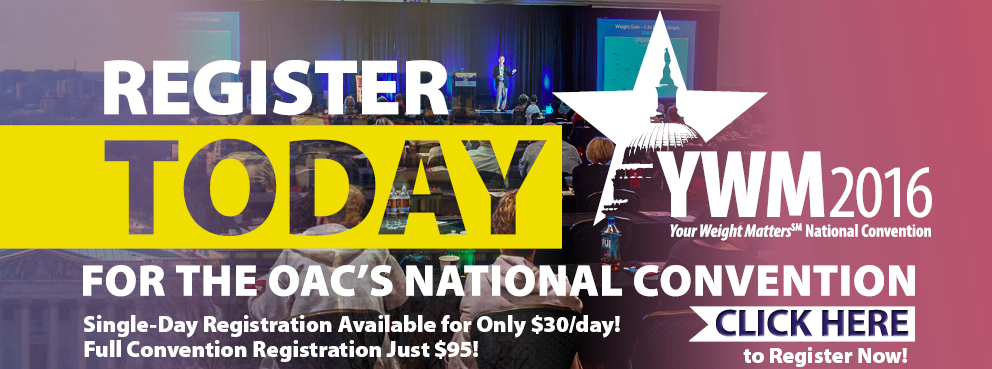There are many factors that impact an individual’s weight, such as behaviors, emotions and even our genetics. The way our brain functions plays a big role in everything related to our body — but can the foods we eat make the brain crave the unhealthy options available to us?
There’s research on this phenomenon, and Nicole Avena, PhD, author of “Why Diets Fail (Because You’re Addicted to Sugar): Science Explains How to End Cravings, Lose Weight, and Get Healthy,” shared about her research into food addiction and how we can better understand it at the 2013 Your Weight Matters National Convention in Phoenix, Arizona.
Food addiction is a chemical dependency in your brain for specific foods, or even just foods in general. After we expose our bodies to “hyperpalatable” foods, or foods that taste good, they can affect the brain’s rewards system in ways that aren’t exactly natural. This is often the case with processed foods, such as Cheetos and Twinkies. These foods have been redesigned by food manufacturers to be more enjoyable for whoever is eating them, but that doesn’t mean they’re better for you.
Dr. Avena has been studying food addiction for more than 10 years, and her lab found that when the psychological criteria used to determine if someone has a drug addiction is applied to food, the same methods can be used to determine if someone has an actual food addiction. So what aspects of our environment have changed to contribute to food addiction?
Getting Food is Easier Than it Used to Be
“We have to remember that our brains have evolved to be ‘hunters and gatherers,’” Dr. Avena said. “We’d have to work really, really hard for our food. We still have those brains and desires, but the environment has changed. Now when we ‘hunt’ and ‘gather’ our food, it’s usually via a shopping mart with a shopping cart, and we’re able to easily get access to lots of different types of food without much work.”
There’s an Increase in the Amount of Sugar We’re Consuming
The average American eats approximately 22 grams of added sugar per day, and these added sugars have been reported to make up for approximately 16 percent of a child’s daily calories intake.
Hedonic Eating vs. Caloric Need
Hedonic eating is eating something because it feels good to do so and brings you pleasure. Caloric need, on the other hand, is when we eat because we need food to survive. Recognizing the difference between the two, and when you’re practicing them is important to understanding how the food your consuming is affected your weight management goals.
When you participate in hedonic eating, you’re eating because you want to eat, and not just because you’re hungry. It could be out of boredom, because you’re stressed or a multitude of other reasons. You’re eating foods because they taste good, and this could mean you’re eating foods that are rich in fats and sugars — which usually also means they’re high in calories.
With caloric need though, you’re eating just to survive and because your body recognizes it needs food to live. It’s not so much about flavor or social settings or enjoyability, it’s a meal so you’re stomach isn’t grumbling throughout the day and so you have the energy to power through your day.
Food is a Big Part of our Social Lives
Food has also become a part of our social settings as well: when you’re going out to eat, or you’re at a party with a buffet, there’s lots of events where the main event can center around food. This lifestyle habit can tempt people towards hedonic eating, and it’s important to maintain your self awareness as you’re eating, and to ask yourself whether you’re eating something because you’re hungry, or simply because it tastes good.
What Happens in the Brain When We Eat?
There’s different pathways in the brain that are activated when we eat, Dr. Avena says, and these pathways were put in place to reinforce natural behaviors that we need to survive. Simply put, these pathways exist so we enjoy doing the things we need to do to survive, including eating.
Could some people be “addicted” to eating good tasting foods that are rich and sweets and fats, in ways that resemble drug addiction?
There are overlaps in the brain pathways that are activated by the foods we enjoy eating and addictive drugs, Avena says. If someone is abusing drugs, for example, these drugs will act on their brain’s systems, which evolve to reinforce natural behaviors — and food can have the same effect.
How Can We Manage Food Addiction?
1. As a Society, We Have to Stop Being “Food Pushers”
One step to managing food addiction is to assess your current social norms and try to alter them, Dr. Avena says. Social situations that we may want to avoid include rewarding children with food for good behavior, having food as the main focus of our social gatherings and including popular toys in unhealthy foods, such as prizes in cereal boxes for children.
2. We Have to Become Savvy Food Consumers
By better understanding the food we’re eating, we’ll understand the nutrition labels, know where sugars are hidden and follow new research on food and nutrition to learn the latest about what we’re eating. By taking matters into our own hands, we can make sure we’re not eating foods that may otherwise lead to addictive behaviors.
3. Later On, Pharmacological Approaches May be Able to Help
Researchers are studying the brain to identify possible drug treatments for overeating, especially overeating the highly-palatable foods that can hinder our weight-loss goals.
Want to watch the entire presentation? Check out the video below for Dr. Avena’s entire talk at YWM2013 and a Q&A session following her presentation:
Interested in learning more about food addiction? Dr. Avena will be speaking in “The Great Debate” series about food addiction at the 5th Annual Your Weight Matters National Convention in Washington, DC on August 25-28. To learn more about the Convention, CLICK HERE.






